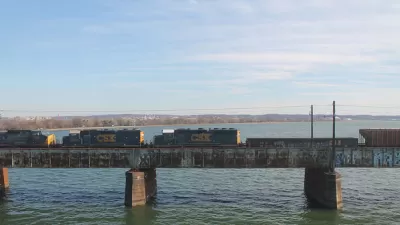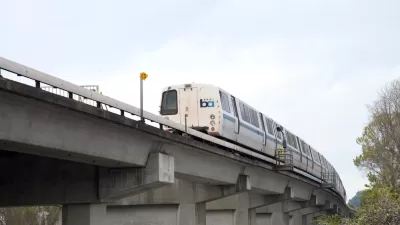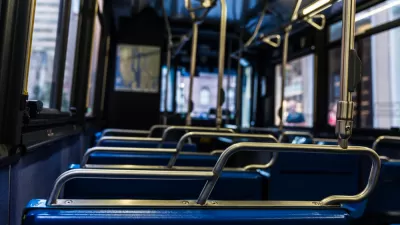More and more people are riding public transit systems, which many officials see as a good sign. But the added strains to the systems are placing many in tight financial situations.
"With gas at $4 per gallon and highway congestion soaring, ridership on the nation's subways and buses has jumped dramatically. Between 1995 and 2006, use of public transportation increased by 30 percent, a rate far outstripping both population growth and increased highway usage. Last year, that meant Americans took some 10.3 billion trips on mass transit. And therein lies the problem. 'There's a transportation finance crisis writ large across the country,' says Robert Puentes, a fellow at the Brookings Institution's metropolitan policy program."
"Because mass transit systems are so expensive to operate, they rely heavily on subsidies from federal, state, and local coffers. But the flow of money has not kept pace with the ridership growth. And when demand is coupled with capital costs or deferred maintenance and bonds coming due, many transit systems now find themselves in a financial bind that promises to only get worse."
"In the red. The transit agency in Boston, for instance, is now some $5 billion in the red. The New York Transit Authority will face an estimated $700 million deficit this year, which is projected to jump to a $1.1 billion shortfall in 2009 and a $2.07 billion gap by 2011."
Thanks to Reconnecting America
FULL STORY: Mass Transit Systems Have a Hard Time Paying the Bills

Florida Considers Legalizing ADUs
Current state law allows — but doesn’t require — cities to permit accessory dwelling units in single-family residential neighborhoods.

Manufactured Crisis: Losing the Nation’s Largest Source of Unsubsidized Affordable Housing
Manufactured housing communities have long been an affordable housing option for millions of people living in the U.S., but that affordability is disappearing rapidly. How did we get here?

Research Shows More Roads = More Driving
A national study shows, once again, that increasing road supply induces additional vehicle travel, particularly over the long run.

EV Chargers Now Outnumber Gas Pumps by Nearly 50% in California
Fast chargers still lag behind amidst rapid growth.

Affordable Housing Renovations Halt Mid-Air Amidst DOGE Clawbacks
HUD may rescind over a billion dollars earmarked for green building upgrades.

Has Anyone at USDOT Read Donald Shoup?
USDOT employees, who are required to go back to the office, will receive free parking at the agency’s D.C. offices — flying in the face of a growing research body that calls for pricing parking at its real value.
Urban Design for Planners 1: Software Tools
This six-course series explores essential urban design concepts using open source software and equips planners with the tools they need to participate fully in the urban design process.
Planning for Universal Design
Learn the tools for implementing Universal Design in planning regulations.
City of Moreno Valley
Institute for Housing and Urban Development Studies (IHS)
City of Grandview
Harvard GSD Executive Education
City of Piedmont, CA
NYU Wagner Graduate School of Public Service
City of Cambridge, Maryland





























